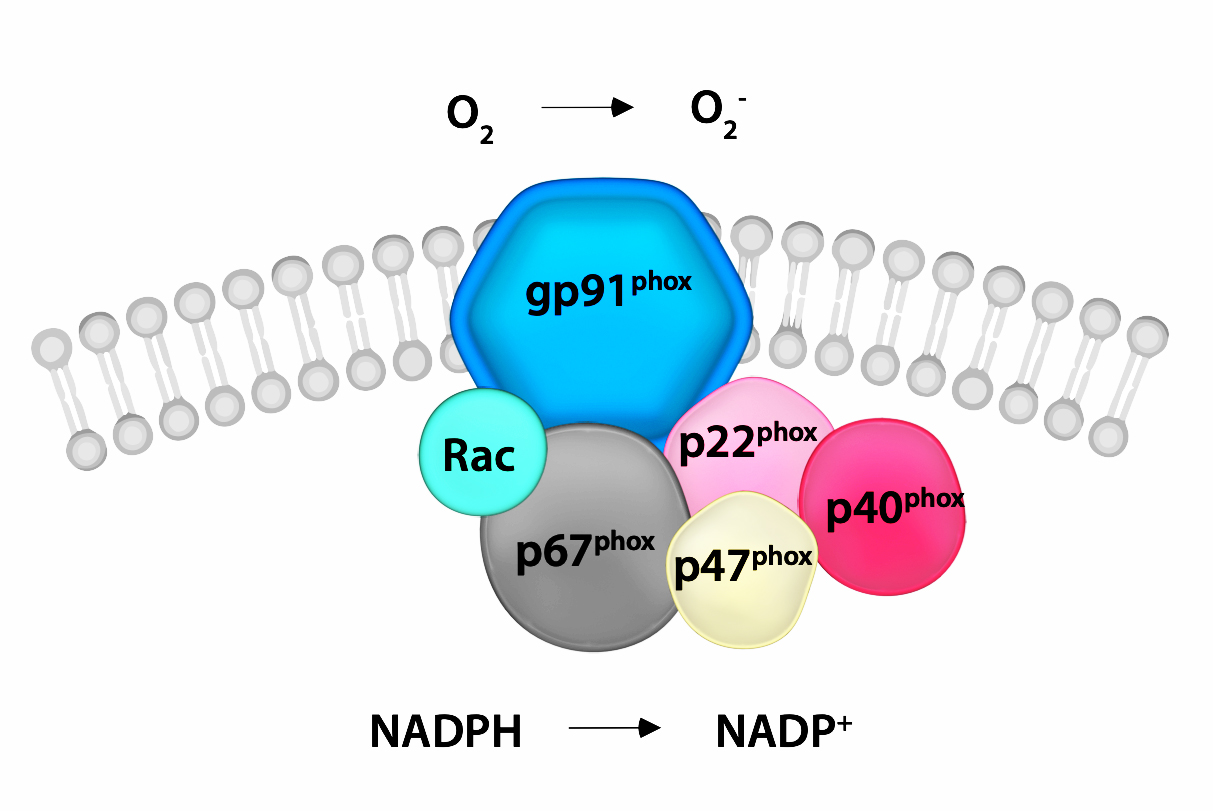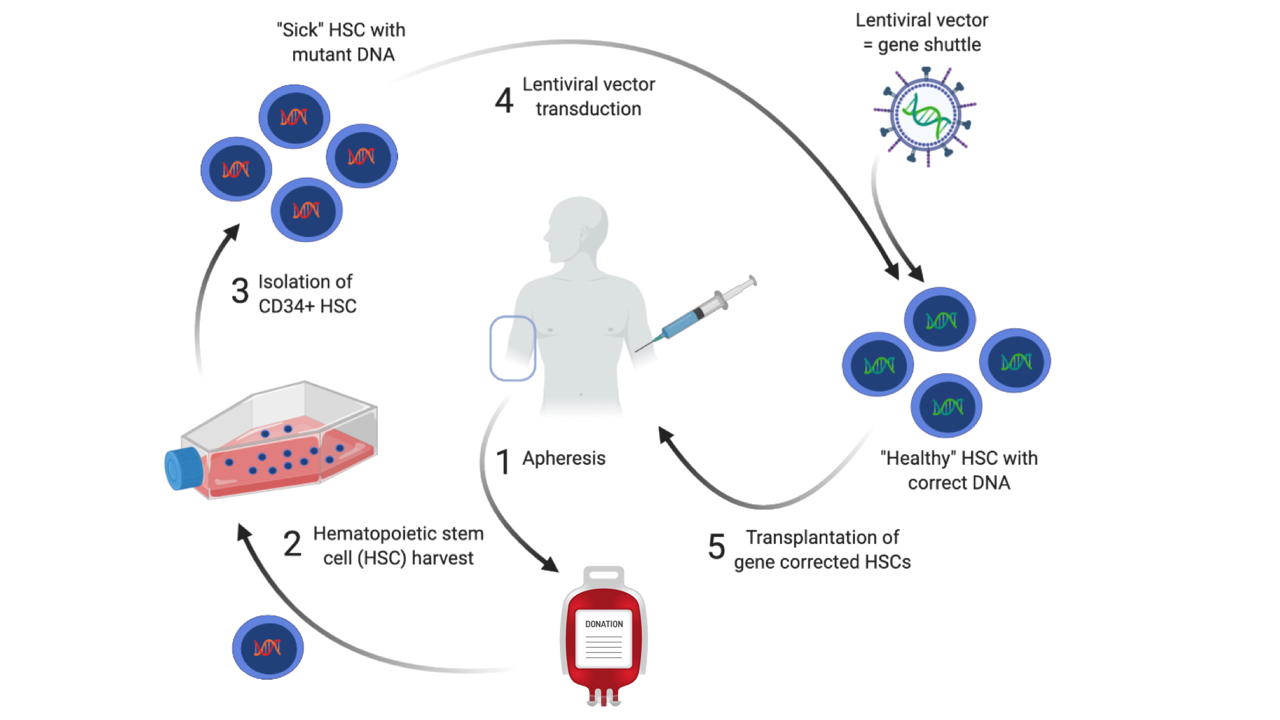Chronic granulomatous disease (CGD)
Chronic granulomatous disease (CGD), is an inherited immune defect that results from impaired function of nicotinamide adenine dinucleotide phosphate (NADPH)-oxidase subunits in phagocytic cells. This oxidase catalyzes the production of microbicidal reactive oxygen species which are used to fend off pathogens. The lack of functional NADPH-oxidase exposes patients to life-threatening bacterial and fungal infections, as well as hyperinflammation such as severe inflammatory bowel disease. Life-expectancy is compromised in affected children and young adults, and disease burden is high

Chronic Granulomatous Disease is caused by mutations in the NADPH Oxidase enzyme present in Neutrophils. Without a functioning NADPH Oxidase, these immune cells cannot produce reactive oxygen species needed to fend off pathogens, leaving the body vulnerable to severe infections and inflammations.
By applying innovative breakthrough technologies, the CRPP ImmuGene aims to develop a combination of ex-vivo gene therapy and autologous bone marrow transplantation to treat CGD. The patient’s own blood-building (hematopoeitic) stem cells (HSC) will be isolated, transduced with ex-vivo a lentiviral vector to deliver the therapeutic transgene, and then reinfused into the patient, where they engraft the bone marrow and give rise to healthy immune cells.

Workflow of ex-vivo gene therapy and autologous bone marrow transplantation. First, bone marrow is collected from a patient and CD34+ hematopoietic stem cells are enriched and cultured. Next, the cells are transduced with a lentiviral vector ex vivo. Before reinfusion, the patient receives conditioning chemotherapy to ablate the diseased immune system and to allow engraftment of gene corrected cells.